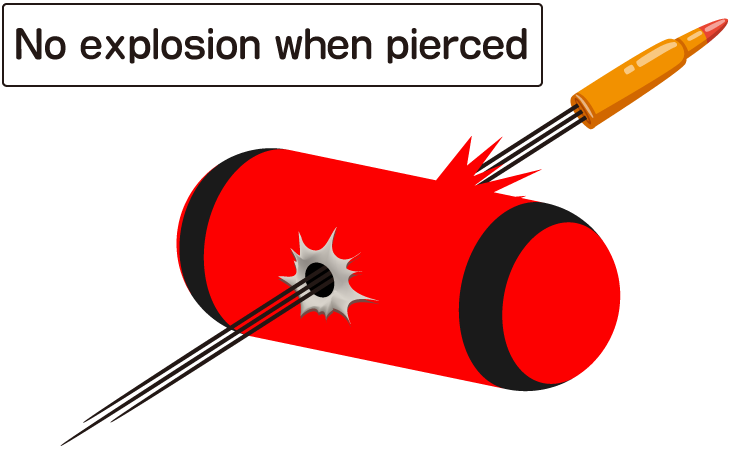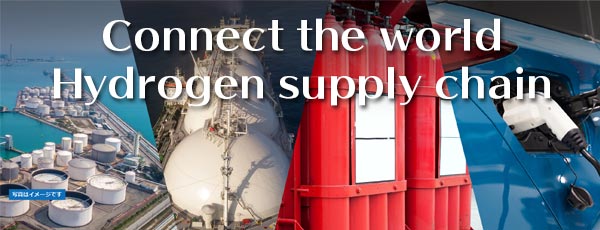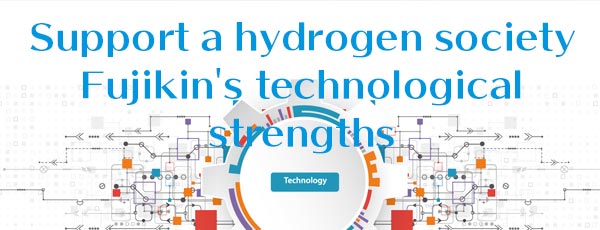An almost inexhaustable supply of clean energy
The third most abundant element on the earth's surface including oceans
Fossil fuels such as petroleum, coal, and natural gas are limited, and renewable energy such as sunlight and wind power have a weakness in that electric power generation is influenced by weather conditions and day and night. Therefore, hydrogen is attracting attention. It is the most abundant element in the universe and third most abundant on the earth's surface, mostly in the state of seawater, and can be said to be an energy that can be used stably and almost inexhaustively.
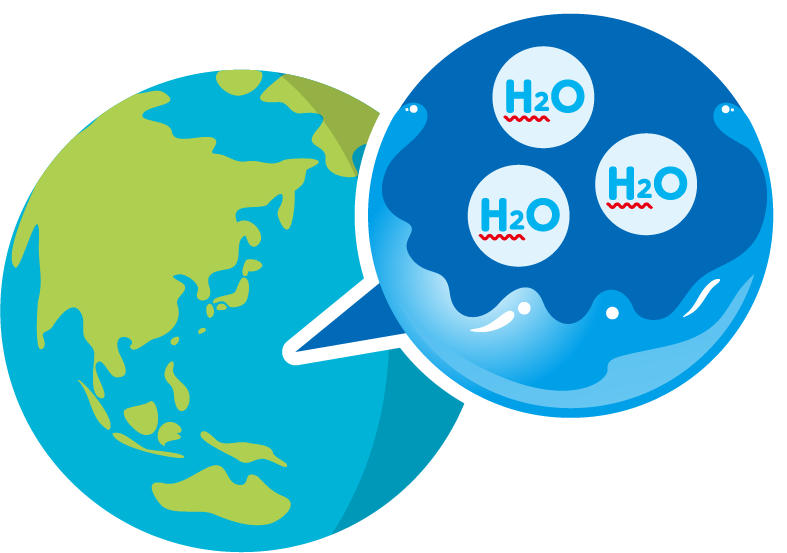
Water is the only emission during electricity generation
Oxygen and hydrogen are generated by electrolysis when electricity is passed through water, but on the converse, if you react oxygen and hydrogen, you can make electricity. Fuel cells have used this reaction. Only water is generated when generating electricity. Substances that are the cause of air pollution and greenhouse gases such as carbon dioxide which are released when generating electricity with fossil fuels, are not produced.
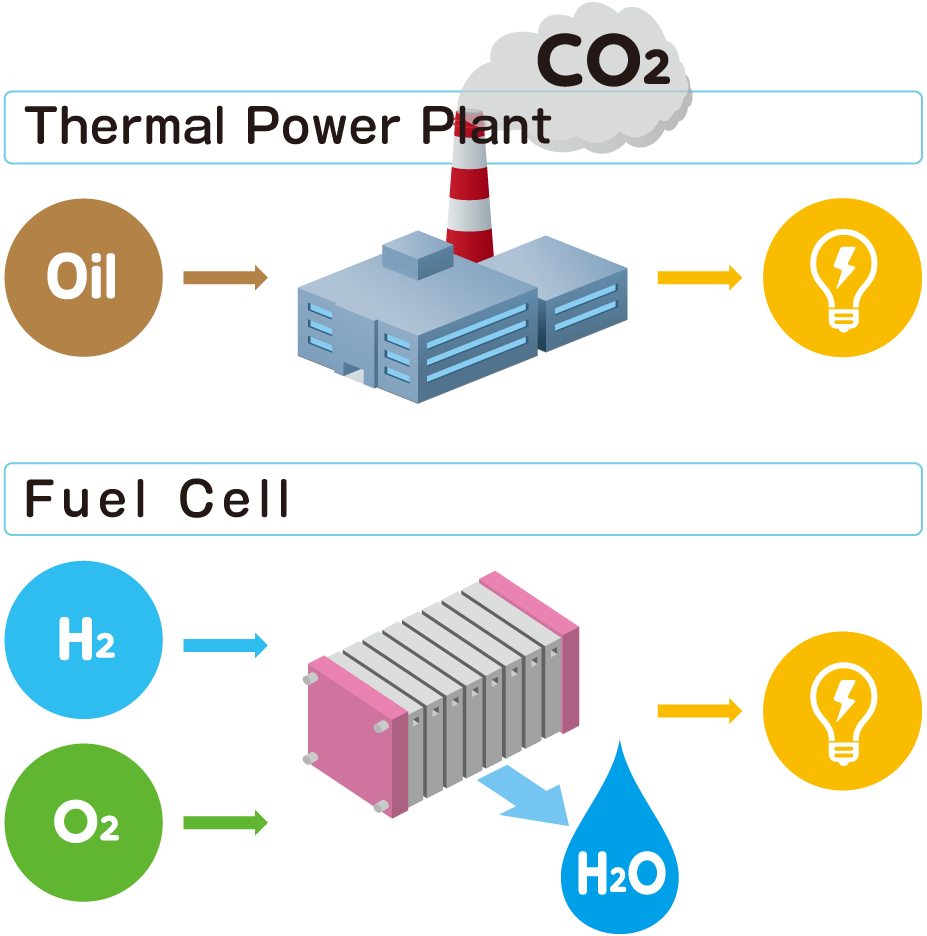
Is hydrogen dangerous? It's actually a misunderstanding
A misunderstanding that started with an airship accident around 80 years ago
Since hydrogen explodes, it is dangerous. Have you heard such a conversation? It seems like a rumor was spread due to an accident that occurred over eighty years ago when a large airship went up in flames in America, but in recent years, a strong theory is that the fire was caused by the airship's paint and oil in the fuel. Although hydrogen is an easy to burn substance, gasoline and natural gases are the same. It can be used safely depending on how you handle it.
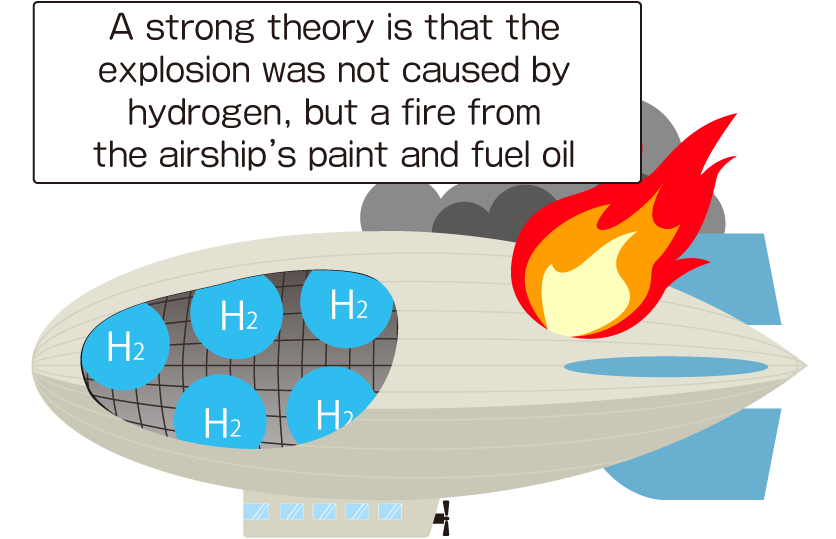
Even if it leaks, it quickly diffuses into the air
Among the many gases, hydrogen is the lightest. This is also one of the special characteristics connected to safety. When gasoline leaks, it spreads on the ground and LP gas is also heavier than air so it accumulates in the lower side. However, hydrogen rises into the atmosphere and quickly diffuses and becomes weak, which makes it difficult to ignite, and even if it ignites, it will burn longitudinally and will not spread laterally.
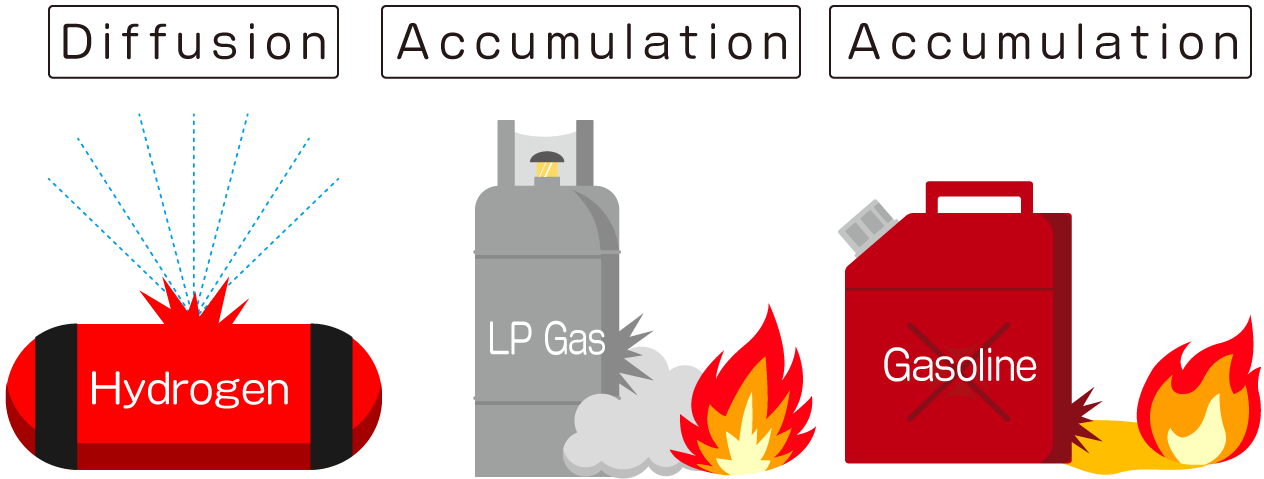
Carrying out a bullet penetration test with a hydrogen tank
For example, fuel cell vehicles (FCV) are equipped with a three layer structured high pressure hydrogen tank, which has implemented excellent strength and durability by using plastic (FRP) that is strengthened by light and strong carbon fiber and glass fiber. Hydrogen leaks are prevented even after repeating various collision and fire tests. Furthermore, tests were also conducted by firing bullets in case of a crime. Even though the tank was penetrated when extremely powerful bullets were used, the container did not explode.
